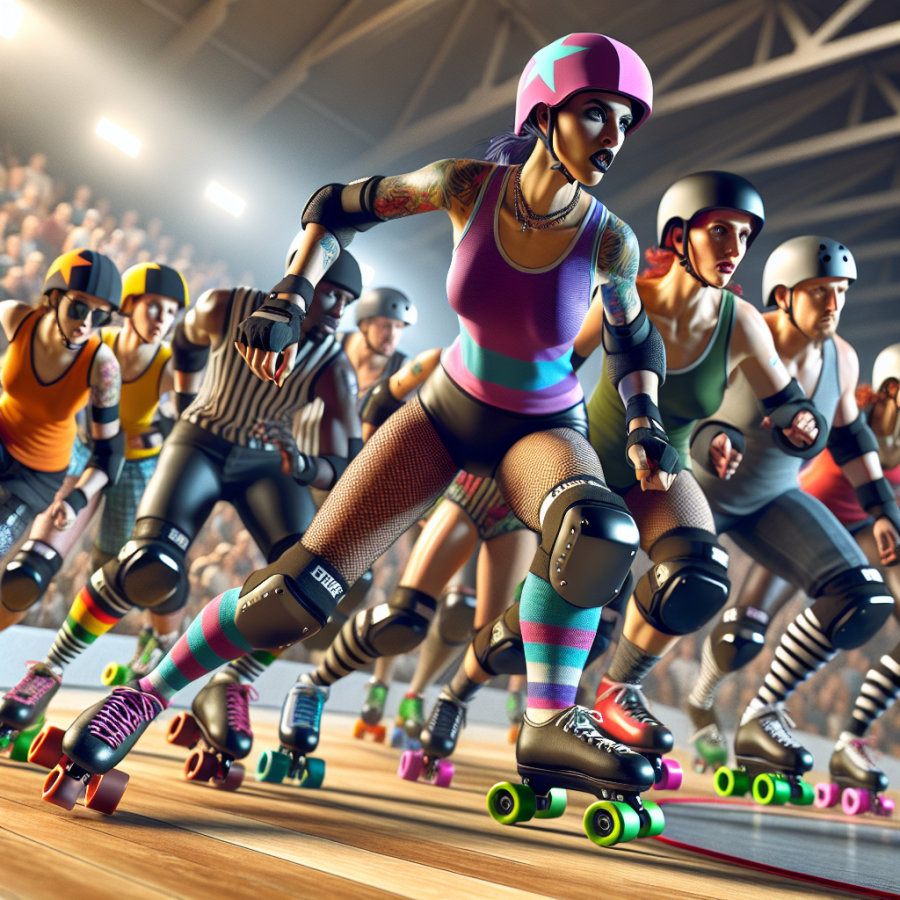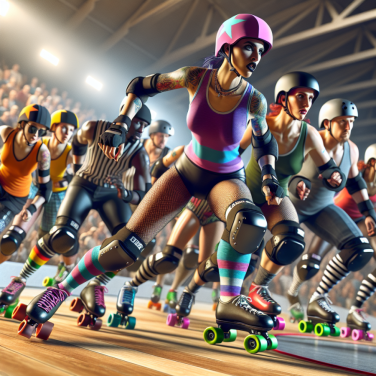Reinventing the Wheels: How Modern Roller Derby Is Breaking New Ground
The resurgence of roller derby has been nothing short of remarkable. This revival is fueled by a combination of nostalgia, the proliferation of do-it-yourself culture, and a desire for inclusive community activities. Modern roller derby has transcended its roots to become a progressive and empowering sport, redefining athleticism and community for the 21st century.
Roller derby first saw its heyday in the mid-20th century, with banked track leagues and televised bouts. However, the sport's reincarnation has been dominated by a flat track format, which has lowered barriers to entry and allowed for exponential growth worldwide. The Women's Flat Track Derby Association (WFTDA), established in 2004, has been instrumental in this global movement, providing standardized rules and a competitive structure that fosters high levels of athleticism and strategic play.
Perhaps one of the most significant ways in which modern roller derby is breaking new ground is through its commitment to inclusivity. The sport has been at the forefront of championing for LGBTQ+ rights and visibility, with policies that welcome transgender and non-binary participants. This progressive stance on inclusion goes beyond the track, with leagues worldwide working to ensure their sport is accessible and welcoming to all, regardless of gender, race, or socioeconomic background.
Modern roller derby has also redefined what it means to be an athlete. The game is physically demanding, combining speed, strategy, and full-contact action, requiring a high level of fitness, agility, and endurance. Roller derby athletes are now recognized for their dedication to the sport, with many following rigorous training programs that rival those of professional sports teams. The result is a legion of highly skilled and committed competitors who take their sport very seriously.
The democratic and DIY spirit that underpins roller derby is another factor in its modern-day appeal. Leagues are typically skater-owned and operated, ensuring that those who are most invested in the sport have a say in how it is run. This model of governance not only empowers skaters but also fosters community involvement and leadership development.
Modern roller derby has also embraced technology and media to promote the sport and reach new audiences. Live streaming of bouts and online platforms have been key in expanding its fan base and allowing for remote coaching and strategizing. Social media and online communities provide a space for roller derby enthusiasts to connect, share experiences, and organize events.
Read also:
Sheaf Toss: The Traditional Test of Strength and Skill
Tracing the Resurgence of Roller Derby: A Contemporary Comeback Story
The resurgence of roller derby has been one of the most intriguing sports comebacks of recent times. Originally gaining popularity in the mid-20th century, it is a contact sport that involves two teams of five members roller-skating in the same direction around a track. The game consists of a series of short matchups ("jams") in which both teams designate a scoring player (the "jammer") who scores points by lapping members of the opposing team.
This comeback story truly took shape in the early 2000s, as modern roller derby began to rise from its roots as a scripted entertainment spectacle to a genuine competitive sport. The revival was largely driven by female amateur athletes, fostering an inclusive and empowering culture that significantly distinguished it from its earlier incarnation. Today's roller derby has crafted an identity built on athleticism, strategy, and community, evolving roller derby into a sport with international leagues and a passionate following.
One factor fueling this revival has been the DIY approach many leagues have adopted. Unlike many professional sports, modern roller derby is often skater-owned and operated, allowing leagues to create their own rules and organizational structures tailored to the needs and values of their members. This grass-roots endeavor has enabled rapid growth and democratized the sport, making it accessible to a diverse range of participants.
Moreover, the sport’s resurgence has been helped along by a marked shift in cultural perception. Roller derby has capitalized on a broader movement of empowering women in sports, shedding light on the athleticism and determination of its participants. Today, it is celebrated for its inclusivity, welcoming individuals regardless of background, body type, or gender identity, and promoting an environment where diversity in athleticism is the norm.
Another key to its modern era success has been media representation and the internet. Films like "Whip It" and a plethora of online resources have introduced the sport to wider audiences, sparking interest and fostering a global community. Social media platforms and online forums have made it easier than ever for enthusiasts to connect, exchange strategies, and coordinate international events.
Technological advancements have also played a role in the sport’s modernization. Advances in skate technologies have improved performance and safety, while online streaming services have made it possible for fans around the world to watch bouts live.
The current incarnation of roller derby even has a set of standardized rules, established by the Women's Flat Track Derby Association (WFTDA), which has been pivotal in organizing the sport on a professional level.




